10 Most Profitable Crops for Small Farms
- June 6, 2024
- 0 comment
Thinking about making some money from your love of gardening? Choosing the right crops is key, especially if you’re working with a smaller space. This article will show you the top 10 crops that not only bring in good money but are also well-suited for smaller farms. These crops are perfect whether you’re just starting out or looking to get more out of your farm.
1. Ginseng
Ginseng stands as a prime example of a high-value crop requiring patience and strategic cultivation. With a growth cycle ranging from 3 to 12 years, ginseng demands long-term commitment but offers substantial financial rewards. High-quality wild simulated ginseng, which mimics the conditions of wild ginseng without the unpredictability of foraging, can fetch up to $800 per dry pound.

This crop thrives under a canopy of shade cloth, which simulates its natural woodland environment, minimizing the need for daily maintenance. Considering all parts of the plant—roots, seeds, and rootlets—the potential revenue from an acre of ginseng could soar to $200,000. Ginseng’s value is also enhanced by its historical and ongoing use in traditional medicine, appealing to a broad market interested in natural health products.
Tips
- Sunlight: Prefers 70-80% shade; too much sunlight can damage the plants.
- Soil pH: Best grown in slightly acidic soil, pH 5.5 to 6.5.
- Water Requirements: Requires moist, well-drained soil without being waterlogged.
- Ideal Temperatures: Thrives in cooler temperatures, ideally between 50°F and 80°F.
- Harvesting: Harvest only mature roots (at least 3-12 years old). Dig carefully to avoid damaging the roots.
- Post-Harvest Handling: Wash gently and air dry slowly in a well-ventilated, shady area to preserve the root’s medicinal qualities.
2. Goji Berries
Goji berries, often highlighted for their superfood status, are prized for their nutritional benefits, packed with antioxidants, and reputed to offer anti-aging advantages. These berries are not just a health powerhouse but also a financially viable crop, capable of producing up to 7,000 pounds per acre.

With dried goji berries commanding prices over $20 per pound, the potential revenue from a single acre could reach approximately $140,000 over three years. This high market value combined with the increasing consumer demand for health-oriented foods makes goji berries a particularly lucrative option for farmers aiming to tap into the wellness market.
Tips
- Sunlight: Requires full sun for optimal fruit production.
- Soil pH: Performs well in neutral to slightly alkaline soil, pH 6.8 to 8.1.
- Water Requirements: Needs regular watering, but established plants are somewhat drought-tolerant.
- Ideal Temperatures: Hardy in USDA zones 5 through 9.
- Harvesting: Pick the berries when they turn bright red and are easily plucked from the branches.
- Post-Harvest Handling: Can be sold fresh or dried. For drying, spread them in a single layer in a dry, ventilated area away from direct sunlight.
3. Lavender
Lavender is celebrated for its wide-ranging applications, from essential oils to floral arrangements, making it a highly versatile crop. An acre of lavender can yield around 12,000 bunches, translating to potential revenues of $72,000 to $156,000 over a three-year period.
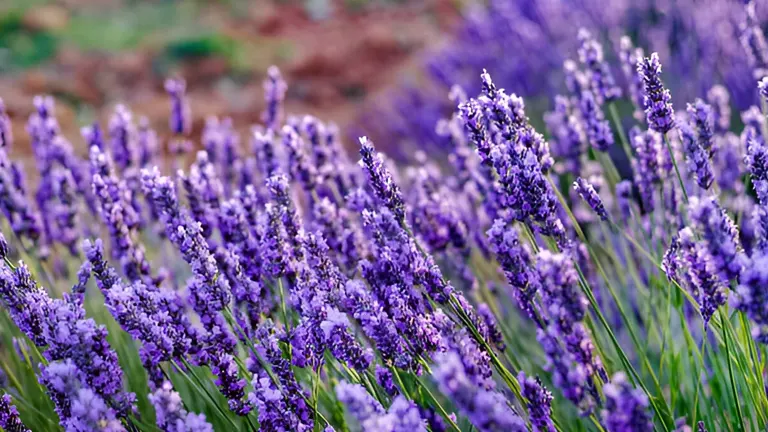
This plant thrives in a variety of climate conditions and requires minimal maintenance, which appeals to farmers looking for a reliable and profitable crop. Its enduring popularity in both the aromatherapy and crafts markets ensures a steady demand, enhancing its attractiveness as a crop choice.
Tips
- Sunlight: Needs full sun.
- Soil pH: Prefers alkaline soils, pH between 6.7 and 7.3.
- Water Requirements: Drought-tolerant once established but requires well-drained soil.
- Ideal Temperatures: Best in warm and dry climates; hardy to zone 5.
- Harvesting: Cut the flower stems when blooms are just opening, early in the morning to retain essential oils.
- Post-Harvest Handling: Bundle and hang upside down in a dark, dry place. Once dried, store in airtight containers.
4. Bamboo
Bamboo is unique among agricultural crops as it is primarily grown not for consumption but for its utility in decoration and as a natural privacy screen. It’s a fast-growing plant, capable of reaching full maturity within just a few years, which allows for rapid commercialization.

In various climates, bamboo thrives with minimal care, producing significant biomass that can generate over $60,000 annually from an average-sized farm. The versatility and robust demand for bamboo, particularly in landscaping and sustainable goods, make it an attractive and profitable option for farmers looking to diversify beyond traditional crop production.
Tips
- Sunlight: Prefers full sun but can tolerate partial shade.
- Soil pH: Adaptable to a wide range, but prefers slightly acidic soil, pH 5.5 to 6.5.
- Water Requirements: Requires consistent moisture, especially when young.
- Ideal Temperatures: Depends on the species; some are hardy to -20°F, others prefer tropical climates.
- Harvesting: Cut mature stalks at ground level with a sharp blade to encourage new growth.
- Post-Harvest Handling: Treat with preservatives to prevent pests and decay if used for construction; dry well if used for decorative purposes.
5. Chives
Chives are highly recommended for beginning farmers due to their straightforward cultivation and minimal upkeep. As a perennial herb, chives regenerate annually without needing replantation, making them a hassle-free crop.

They can yield as much as 16,000 pounds per acre, leading to substantial potential earnings ranging from $64,000 to $128,000 per acre. This robust yield, coupled with their popularity in culinary uses both fresh and dried, makes chives an appealing choice for those entering the agricultural sector and seeking a reliable source of income.
Tips
- Sunlight: Full sun to partial shade.
- Soil pH: Prefers slightly acidic to neutral soil, pH 6.0 to 7.0.
- Water Requirements: Needs regular watering to keep the soil moist.
- Ideal Temperatures: Hardy in USDA zones 3 through 9.
- Harvesting: Cut the leaves down to the base when they are mature enough, leaving about 2 inches to regrow.
- Post-Harvest Handling: Wash thoroughly and either sell fresh, bundled, or dried.
6. Wasabi
Wasabi, known for its authenticity and scarcity, is a challenging crop that requires specific conditions reminiscent of its natural freshwater stream environments. Cultivating real wasabi offers significant financial rewards, with the ability to command prices up to $120 per pound when sold directly to restaurants.

The intricacies involved in its cultivation make wasabi farming a high-risk endeavor, yet it can yield as much as $120,000 per acre each year, positioning it as a high-value agricultural product for those who can navigate its complexities.
Tips
- Sunlight: Prefers shaded conditions or filtered sunlight.
- Soil pH: Requires slightly acidic to neutral soil, pH 6.0 to 7.0.
- Water Requirements: Needs constant, flowing water, mimicking its natural stream habitat.
- Ideal Temperatures: Best in cool climates, typically between 45°F and 70°F.
- Harvesting: Gently pull the plant from the soil by the base to ensure the rhizomes are intact.
- Post-Harvest Handling: Rinse off any soil and keep refrigerated. Use fresh or process into wasabi paste soon after harvesting to maintain potency.
7. Saffron
Saffron is highly prized for its unique flavor and the intense labor required to cultivate it, making it one of the most expensive spices in the world. Approximately 75,000 saffron crocus flowers are needed to produce just one pound of saffron, yet a mere quarter-acre can support this quantity.
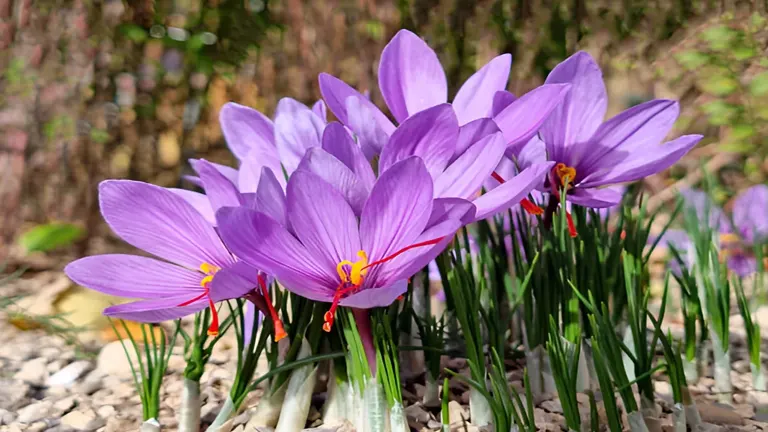
The meticulous harvesting process, involving the delicate removal of stigmas from each flower, justifies the high market price of saffron, which can soar to $180,000 per acre annually. This makes saffron a particularly profitable crop for those ready to invest in its labor-intensive cultivation.
Tips
- Sunlight: Requires full sun.
- Soil pH: Thrives in neutral to slightly alkaline soil, pH 6.0 to 8.0.
- Water Requirements: Needs well-drained soil and moderate watering.
- Ideal Temperatures: Grows best in warm, sunny environments; hardy to USDA zone 6.
- Harvesting: Carefully pluck the red stigmas from the crocus flowers early in the morning.
- Post-Harvest Handling: Dry quickly under heat to lock in the flavor and store in airtight containers away from light.
8. Gourmet Garlic
Gourmet garlic is a lucrative crop, commanding prices up to $16 per pound, significantly higher than the usual market rate for standard garlic. This type of garlic boasts a longer growing cycle but offers substantial yields of between 10,000 and 12,000 pounds per acre.

With these yields, gourmet garlic can generate annual revenues ranging from $160,000 to $192,000 per acre. This crop is an excellent choice for farmers looking to differentiate their product offerings and tap into high-end markets where consumers are willing to pay a premium for superior quality.
Tips
- Sunlight: Requires full sun.
- Soil pH: Prefers neutral to slightly acidic soil, pH 6.0 to 7.0.
- Water Requirements: Needs regular watering during the growing season but less as the bulbs mature.
- Ideal Temperatures: Best grown in cool to moderate climates; hardy in USDA zones 4 through 9.
- Harvesting: Lift the bulbs carefully with a fork when the leaves begin to brown and die back.
- Post-Harvest Handling: Cure garlic in a dry, ventilated area for several weeks before cleaning and storing.
9. Mushrooms
Particularly noted for their quick growth cycles, mushrooms, especially oyster varieties, offer significant profitability. They are commonly cultivated indoors using vertical farming techniques, maximizing yield within limited spaces.
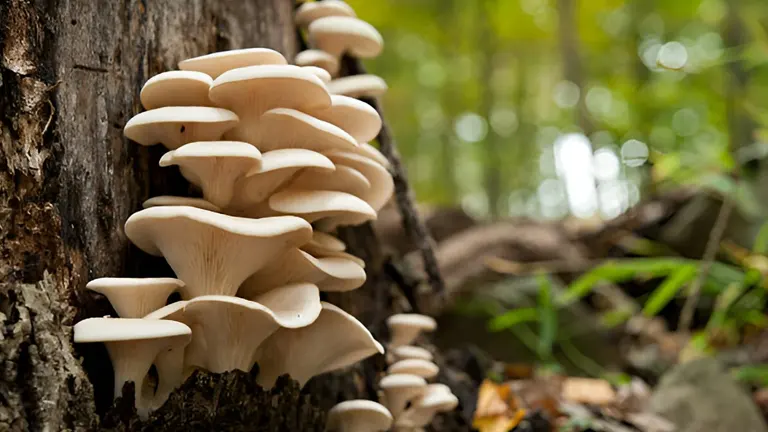
Oyster mushrooms can reach harvest in just six weeks, and under optimal conditions, a single acre can produce up to 300,000 pounds annually, translating to potential revenues of around $3 million. Despite the high yield, mushroom cultivation demands considerable initial investment and strict environmental control to mitigate risks of contamination. The perishable nature of mushrooms also gives an advantage to local growers over those who need to transport them over longer distances, as the quality can deteriorate quickly.
Tips
- Sunlight: Does not require sunlight; grown in shaded or indoor environments.
- Soil pH: Not applicable as mushrooms are typically grown in substrate mixtures.
- Water Requirements: High humidity and consistent moisture are crucial.
- Ideal Temperatures: Thrives in temperatures between 55°F and 75°F.
- Harvesting: Cut the mushroom clusters at the base when fully matured but before the caps uncurl fully.
- Post-Harvest Handling: Mushrooms must be sold or processed quickly after harvesting due to their short shelf life. Keep chilled and in high humidity if not used immediately.
10. Microgreens
Microgreens are celebrated for their exceptionally short growth cycle and high market value, often fetching more than $15 per pound. They can be harvested within just two to three weeks of planting.

Adopting vertical farming and controlled environmental technologies enables efficient use of small spaces—about 1,000 square feet can produce roughly 20 pounds of microgreens per square foot monthly. This setup can generate revenues approaching $300,000 monthly. Given their brief shelf life, microgreens are typically sold fresh, directly to restaurants or local grocery stores, ensuring premium freshness and quality.
Tips
- Sunlight: Can grow under full spectrum artificial lights or indirect sunlight.
- Soil pH: Performs best in neutral soil, pH 6.0 to 7.0.
- Water Requirements: Requires consistent moisture but is sensitive to overwatering.
- Ideal Temperatures: Optimal growth occurs between 60°F and 70°F.
- Harvesting: Cut microgreens just above the soil line when the first true leaves emerge.
- Post-Harvest Handling: Rinse gently but thoroughly to remove soil, then dry on paper towels or use a salad spinner. Pack them in breathable containers for short-term storage.
Marketing Tips for Profitable Crops
Effectively marketing agricultural products requires a combination of strategic packaging, strong branding, and savvy digital marketing. Here are some targeted tips for each of these areas to help farmers and producers effectively market their high-value crops:
1. Packaging Ideas
- Innovative Packaging: Use packaging that not only preserves the freshness and quality of the product but also appeals aesthetically to consumers. For example, biodegradable nets for goji berries or bamboo stalks, and small, breathable burlap bags for gourmet garlic.
- Informative Labels: Include labels that offer consumers insights into the benefits of the product, such as the health benefits of microgreens or the culinary uses of saffron. Include recipes or suggested uses to inspire purchases.
2. Branding
- Unique Brand Identity: Develop a strong brand identity that reflects the quality and specialty of the crop. This could involve a logo, a consistent color scheme, and a tagline that communicates the unique selling points of your product.
- Storytelling: Connect with consumers by sharing the story behind your farm and crops. This might include your farming practices, the origin of the seeds, or the history of the crop like ginseng or saffron.
- Certifications and Endorsements: Obtain organic, non-GMO, or local certifications that reassure consumers of the quality and sustainability of your products.
3. Digital Marketing Strategies
- Social Media Presence: Utilize platforms like Instagram, Facebook, and Pinterest to share vibrant photos and engaging videos of your farming operations, harvest processes, and the uses of your crops. Regular updates and behind-the-scenes content can help build a community around your brand.
- Content Marketing: Create blog posts or videos that educate consumers about your crops, such as the health benefits of wasabi or the versatility of bamboo. SEO-optimized content can also help your website rank higher in search engine results, making it easier for potential customers to find you.
- Email Marketing: Collect email addresses at farmers’ markets or through your website and use them to send out newsletters with updates about your farm, special promotions, or seasonal availability of your crops.
- Online Sales: Develop an e-commerce platform where customers can buy your products directly. Highlight the freshness and quality of your products, offer bundle deals, and provide excellent customer service to encourage repeat business.
4. Community Engagement and Events
- Farmers’ Markets: Regularly participate in local farmers’ markets not just to sell your products but to engage directly with the community, receive feedback, and increase brand recognition.
- Workshops and Farm Tours: Offer workshops on how to use your products or tours of your farm to educate the public about sustainable agriculture and the specific crops you grow. This can build loyalty and a strong local customer base.
By integrating these marketing tips into your business strategy, you can enhance your visibility in the market, attract more customers, and achieve higher sales for your high-value crops. Effective marketing not only increases profitability but also supports the growth and sustainability of your agricultural business.
FAQs
- What are the most profitable crops for small-scale farms?
Crops like saffron, goji berries, and microgreens are highly profitable due to their high market demand and relatively low space requirements. Saffron, known as “red gold,” can be particularly lucrative due to its labor-intensive harvesting process which justifies its high market price. - How can I determine the best crop to grow in my region?
Assess your local climate, soil type, and water availability. Match these with the crop requirements—like saffron thriving in dry conditions or ginseng needing shaded areas. Consulting with local agricultural extensions can provide tailored advice. - What initial investments are needed for high-value crops like lavender or gourmet mushrooms?
Investments can vary but generally include costs for seeds or plants, soil preparation, and possibly greenhouses or special equipment like shade structures for ginseng or indoor growing setups for mushrooms. - How can technology improve the profitability of small farm operations?
Implementing precision agriculture tools, like soil sensors and drip irrigation systems, can optimize resource use. Using greenhouses or vertical farming techniques can also maximize production in small spaces. - What are some effective marketing strategies for these crops?
Establish a strong online presence through a well-designed website and active social media. Utilize storytelling to connect consumers with the origin and uniqueness of your crops, such as the medicinal benefits of ginseng or the nutritional advantages of microgreens. - Are there any emerging markets for high-value crops?
Yes, organic and sustainable markets are growing. Crops like bamboo for eco-friendly products or specialty herbs for gourmet culinary markets are expanding. Stay informed about consumer trends to capitalize on emerging opportunities. - What are some challenges in growing high-value crops like wasabi or saffron?
These crops require specific growing conditions and are labor-intensive. For wasabi, mimicking its natural humid and shaded environment can be challenging, while saffron requires extensive labor to harvest.
We hope you found our rundown of the 10 most profitable crops for small farms both enlightening and inspiring! If you’ve got any personal experiences with these crops, or suggestions for others, we’d love to hear from you. Drop a comment below to share your thoughts and help fellow readers cultivate their own farming success. Happy farming!

Kristine Moore
Forestry AuthorI'm Kristine Moore, a seasoned garden landscaping professional with over 30 years of experience. My extensive career has been dedicated to transforming outdoor spaces into stunning, sustainable landscapes. With a deep understanding of horticulture, design principles, and environmental stewardship, I have become a respected figure in the field, known for creating harmonious, visually appealing, and eco-friendly gardens. My commitment to excellence and continuous learning in landscaping trends and techniques has solidified my reputation as an expert in garden design and implementation.







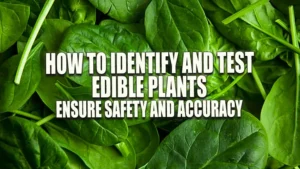

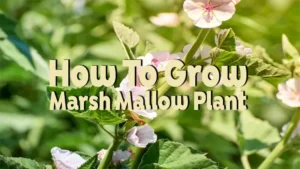

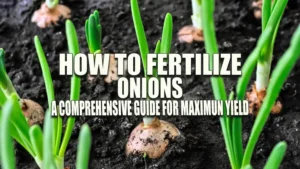
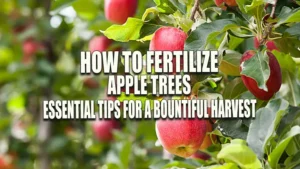
Leave your comment